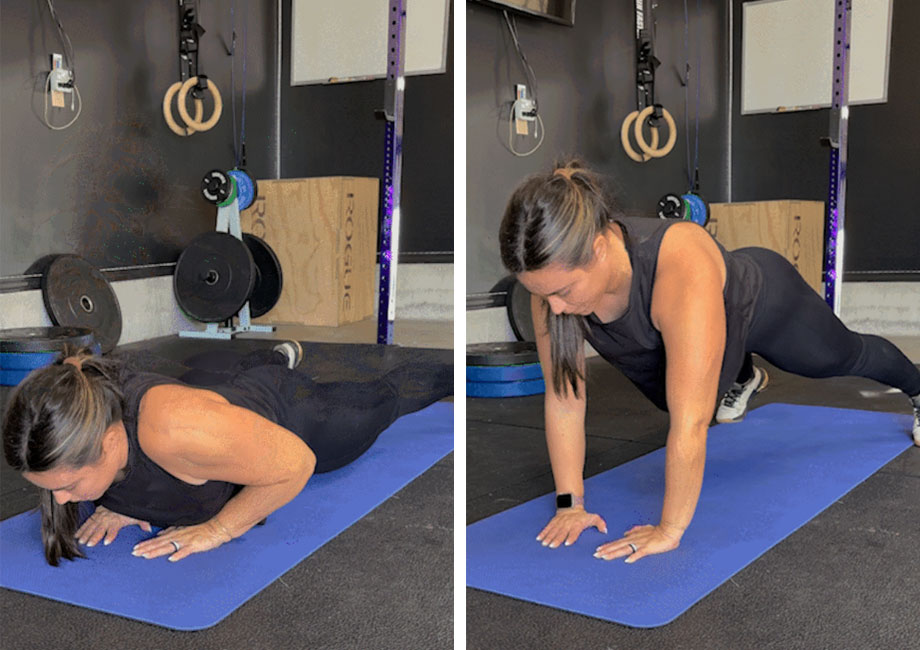We test and review fitness products based on an independent, multi-point methodology. If you use our links to purchase something, we may earn a commission. Read our disclosures.
Imagine sculpting arms that look like they’ve been chiseled from stone, with a chest so full and defined it seems ready to burst out of your t-shirt. Enter the diamond push-up, a powerhouse bodyweight exercise that does more than just enhance your upper-body strength—it transforms it. Also referred to as triangle push-ups, this variation zeroes in on your triceps and chest with laser-like precision, providing a challenge that offers visible results.
If you’ve yearned for that extra edge in your workout routine, the diamond push-up is your ticket to a more sculpted, formidable physique. As a certified personal trainer (CPT) who’s taught clients how to perform everything from pull-ups to lat pulldowns to the bench press, I’ll show you how to get in the proper position to execute this gem of a movement. I’ll also don my science hat and break down the benefits and muscle activation of the diamond push-up so you can understand why it’s one of my go-to upper-body exercises.
RELATED: What Muscles Do Push-Ups Work?
So, whether you want to add a more challenging exercise to your calisthenics routine or you’re looking to take your triceps training to the next level, get ready to hit the floor and shine bright like a diamond as you pump out rep after rep.
How To Do the Diamond Push-Up
The diamond push-up is similar to a standard push-up but with a unique hand position that’ll put your triceps muscles to the ultimate test. You can perform them as part of a dynamic warm-up routine, superset them with another triceps exercise, or use them as a finisher at the end of your strength training session.
How to do it:
- Place your hands on the floor directly beneath your chest, touching your thumbs and index fingers together to form a diamond shape.
- Get in a push-up position by extending your legs behind you and balancing on your toes, keeping your body in a straight line from head to heels.
- Bend your elbows to lower your chest toward your hands, keeping your elbows close to your sides.
- Press through your hands to straighten your arms, returning to the starting position.
- Repeat for the desired number of repetitions.
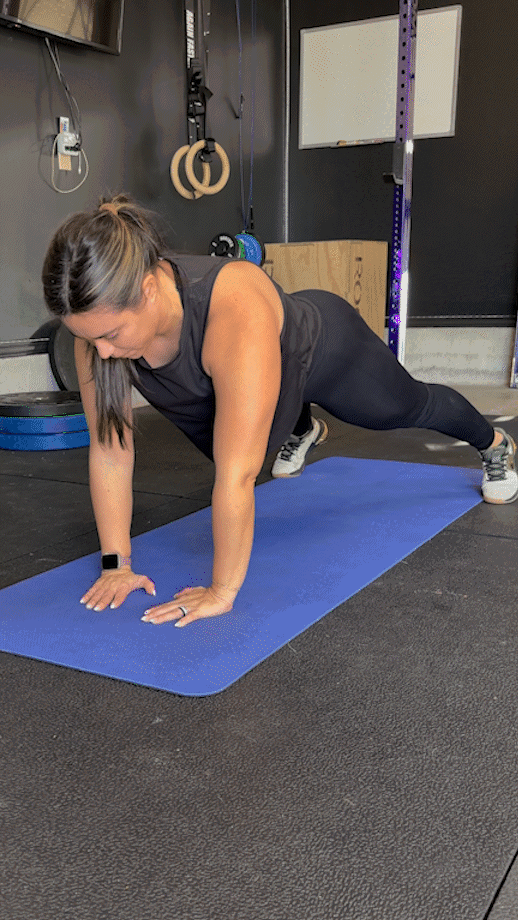
Modifications
- Dial it back: Beginners can reduce the intensity by performing the diamond push-up from their knees.
- Make it harder: Elevate your feet on a weight bench or step to increase the difficulty and target your upper chest more intensely.
How To Do Diamond Push-Ups At Home
You can easily perform diamond push-ups at home with no equipment required. Simply find a comfortable space on the floor or use a yoga mat, then follow the steps outlined above. This exercise is perfect for home workouts due to its minimal space and equipment requirements.
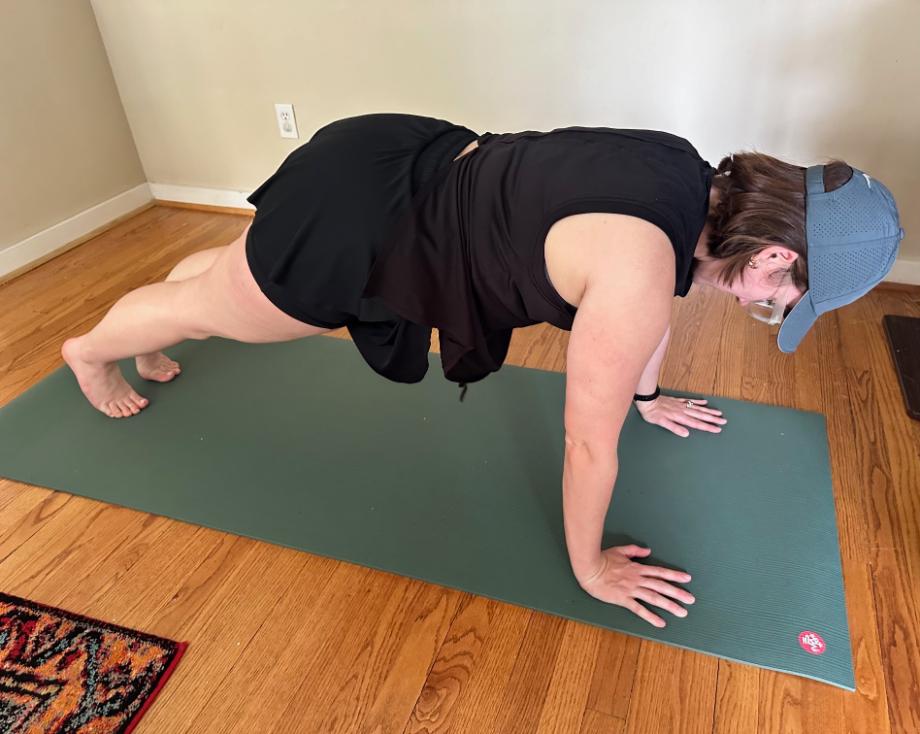
RELATED: At-Home Bodyweight Workout
Diamond Push-Up Variations
- Clapping diamond push-up: Perform a diamond push-up, but as you push up, explode off the ground and clap your hands before returning to the starting position. This plyometric variation adds a power element to the exercise.
- Banded diamond push-up: Adding resistance bands to the diamond push-up increases the intensity, providing additional resistance that helps build greater strength and muscle mass.
- Diamond push-up to pike push-up: After completing a diamond push-up, lift your hips up into a pike position and perform a push-up to target your shoulders and upper chest.
RELATED: 17 Push-Up Variations
Diamond Push-Up Alternatives
If you’re eager to diversify your workout and maximize your triceps and upper-body gains, swap out the diamond push-up with one of these alternative exercises. Adding these dynamic movements to your strength training regimen will target similar muscle groups as the diamond push-up and inject new energy and challenges into your routine for optimal results.
Triceps Dip
Why do it: Triceps dips are excellent for isolating and strengthening your triceps. They also engage your chest, shoulders, and upper back, offering a well-rounded upper-body workout.
How to do it:
- Sit on the edge of a bench, chair, or plyo box and place your hands next to your hips.
- Slide your hips off the edge and lower your body by bending your elbows.
- Push back up to the starting position.
- Repeat for the desired number of reps.
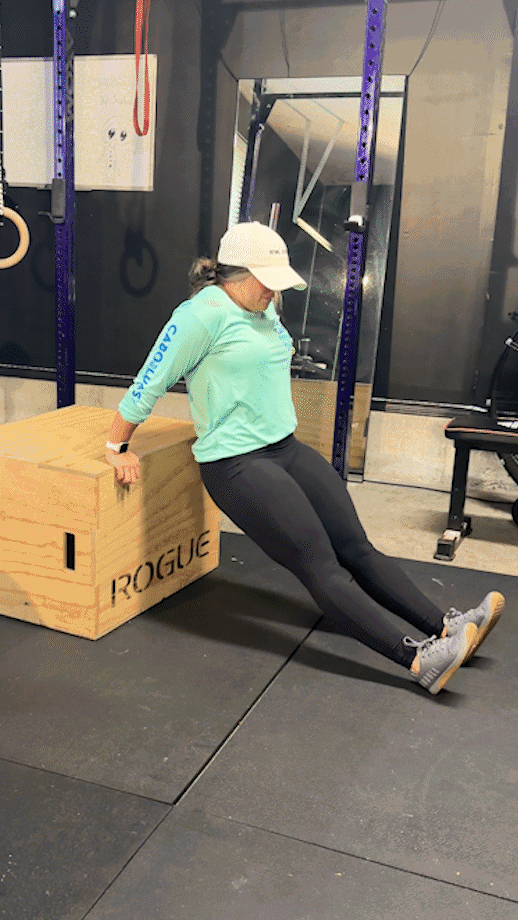
Close-Grip Bench Press
Why do it: Much like the diamond push-up, the close-grip bench press targets your triceps and inner chest, making it ideal for those who lift heavier weights to build strength.
How to do it:
- Lie on a weight bench with your feet flat on the floor and the bar parallel to your eyes.
- Grab the bar firmly with your hands slightly narrower than shoulder-width apart.
- Brace your core, then lift the bar off the rack so it’s in a locked position with your arms extended.
- Lower the barbell to your chest in a controlled manner.
- Pause, then press the bar back up to the starting position.
- Repeat for the desired number of reps.
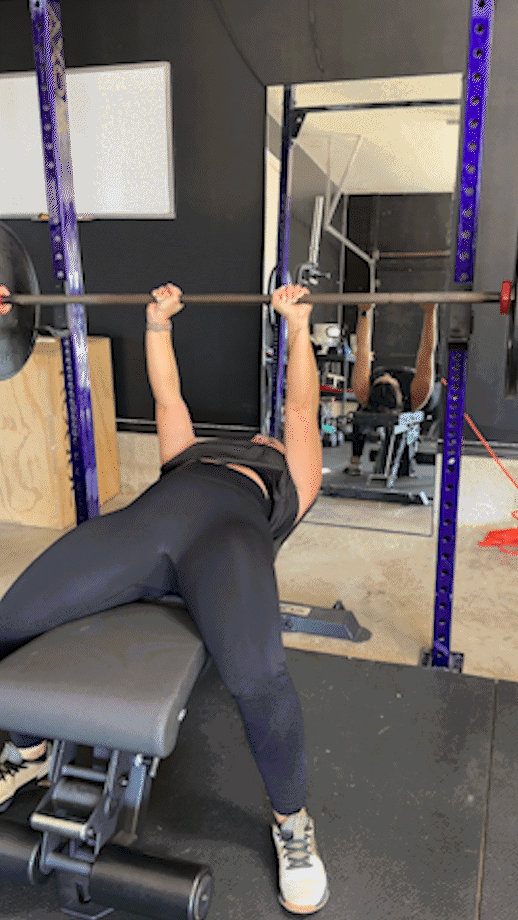
Tate Press
Why do it: The Tate press is an excellent exercise for isolating and building the triceps, particularly the long head, which is often under-targeted in traditional triceps exercises. By strengthening your triceps and chest simultaneously, the Tate press may help improve your performance on other push exercises.
How to do it:
- Lie on a flat bench with a dumbbell in each hand held directly above your chest. Your palms should face forward with your elbows pointed outward and your thumbs next to one another.
- Bend your elbows to lower the dumbbells toward your chest while keeping your palms facing away from you.
- Touch the dumbbells to your chest, then extend your elbows and squeeze your triceps at the top.
- Lower the dumbbells back down and repeat for the desired number of reps.
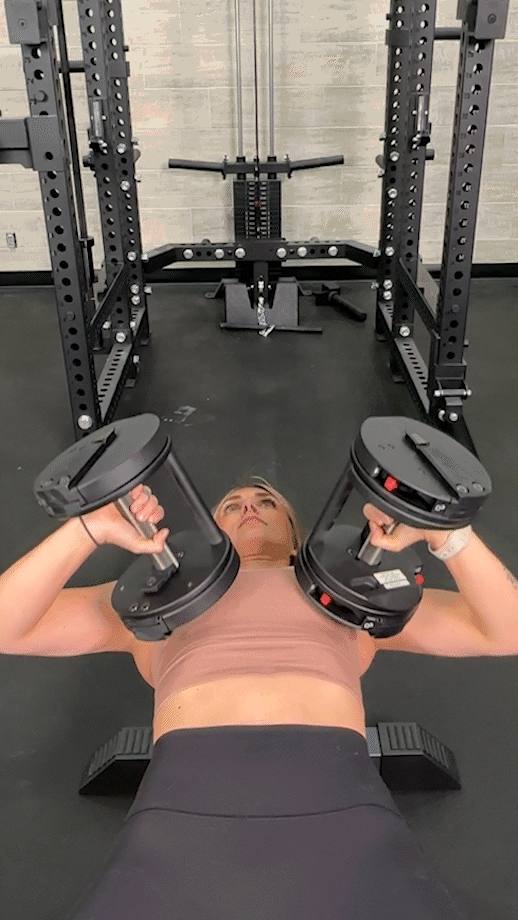
Overhead Triceps Extension
Why do it: The overhead triceps extension is a simple but effective exercise that engages your triceps, deltoids, and core. It can be performed with a dumbbell, cable machine, kettlebell, barbell, or resistance band, making it incredibly versatile and accessible.
How to do it:
- Stand or sit with your feet shoulder-width apart, holding the top of a single dumbbell with both hands or a dumbbell in each hand.
- Extend your arms fully overhead, ensuring your elbows are close to your ears.
- Slowly bend your elbows to lower the weight behind your head, keeping your upper arms stationary.
- Lower the weight until your forearms are parallel to the ground or you reach a comfortable stretch.
- Engage your triceps to extend your arms back to the starting position, ensuring a full range of motion.
- Repeat for the desired number of reps.
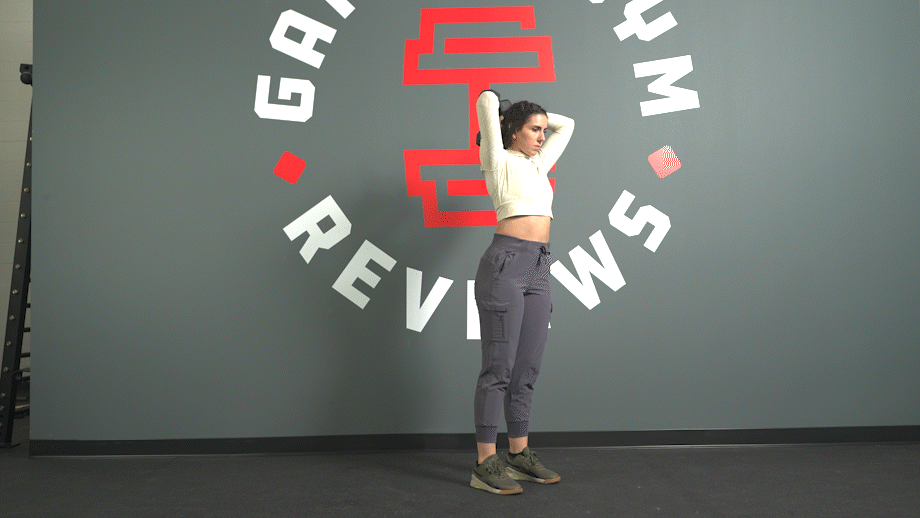
Benefits of the Diamond Push-Up
Diamond push-ups are a versatile and effective exercise that can enhance your upper-body strength and muscle definition. Here’s why you should pencil this movement into your strength training routine.
Helps With Triceps Strength and Development
The diamond push-up places significant emphasis on your triceps, helping to build and define these horseshoe-shaped muscles more effectively than standard push-ups. A 2016 study1 on the effect of different palm widths showed that a narrow-width push-up produced greater activation of the pectoralis minor, triceps, and infraspinatus than the other widths.
This targeted approach can lead to stronger, more sculpted arms. Plus, stronger triceps can also help you perform better on push-day exercises like the overhead press and bench press.
RELATED: Best Triceps Workouts
Helps Increase Chest Strength
By altering your hand placement, the diamond push-up intensifies the workout for the inner chest, promoting better muscle activation and growth. This can produce a more defined and powerful chest, contributing to a balanced and aesthetic upper body.
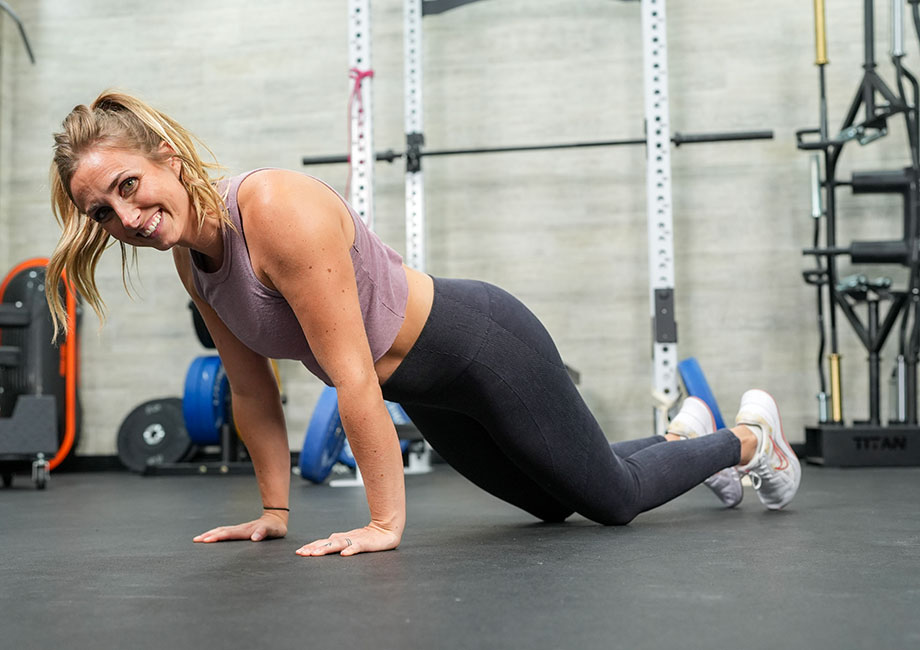
RELATED: Inner Chest Workout
Tests Your Core Stability
Maintaining proper form during the diamond push-up requires engaging your core muscles, including the rectus abdominis and erector spinae. A strong core is essential for preventing injuries, performing well in other lifts, and supporting various physical activities.
RELATED: Best Ab Exercises
No Equipment Needed
One of the greatest benefits of the diamond push-up is that it requires no equipment, making it accessible to anyone, anywhere. Whether you’re at home, in the gym, or on the go, you can easily incorporate this exercise into your routine without needing any special gear.
RELATED: Best Bodyweight Chest Exercises
Common Diamond Push-Up Mistakes
Even though diamond push-ups are straightforward, common mistakes can hinder their effectiveness and increase your risk of injury. Here’s what you should watch out for.
Flaring Your Elbows
Allowing your elbows to flare out during the diamond push-up reduces triceps engagement and can strain your shoulders. Keep your elbows close to your body to maximize the exercise’s benefits.
Sagging Your Hips
Letting your hips sag compromises your form and reduces core engagement. Maintain a straight line from head to heels to ensure proper technique.
Incomplete Range of Motion
Not lowering your chest fully to your hands limits muscle activation. Aim for a full range of motion, bringing your chest close to the diamond shape of your hands.
Improper Hand Placement
Incorrect hand placement can lead to wrist discomfort and ineffective muscle targeting. Ensure your thumbs and index fingers touch, forming a proper diamond shape.
Muscles Worked by the Diamond Push-Up
The diamond push-up effectively targets several key muscle groups, contributing to a comprehensive upper-body workout.
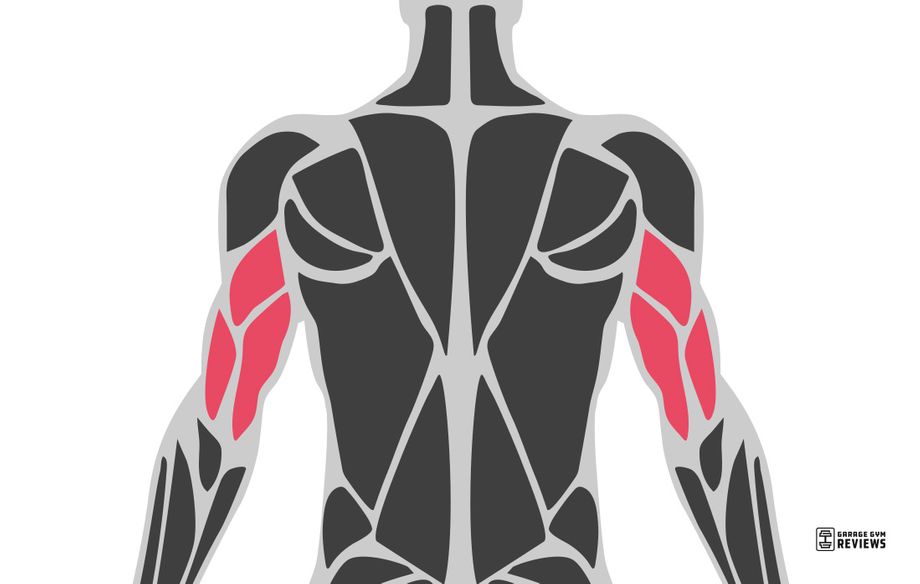
- Triceps: The primary muscle targeted by the diamond push-up, the triceps are responsible for elbow extension and play a crucial role in any pushing movement.
- Pectoralis major: The chest muscles assist in pushing your body up and stabilizing your upper body. Your pecs are particularly engaged during the exercise’s eccentric (lowering) phase, as they lengthen and maintain tension until you push back up.
- Deltoids: The shoulder muscles, particularly the anterior deltoids, stabilize the shoulder joint and assist in pushing.
- Core muscles: The rectus abdominis, obliques, and transverse abdominis are included in this group. These muscles help maintain a straight line from head to heels, providing stability and preventing sagging hips.
- Serratus anterior: Located on the side of the chest, this muscle helps stabilize the shoulder blades and allows for smooth movement during the diamond push-up.
- Erector spinae: These lower-back muscles help maintain proper posture and alignment of the spine, preventing your lower back from sagging.
- Glutes: The gluteal muscles help maintain a straight body position, prevent hip sagging, and provide overall body stability.
- Latissimus dorsi: Your lats assist in stabilizing your back and shoulders, especially during the eccentric phase of the push-up.
- Forearms: The muscles of the forearms help stabilize the wrists and hands, ensuring proper hand placement and grip throughout the movement.
RELATED: What Muscles Does The Bench Press Work?
Diamond Push-Up: Final Thoughts
The diamond push-up is a challenging yet rewarding exercise that can significantly enhance your upper-body strength and muscle definition. By incorporating this move into your routine, you can target your triceps more effectively than traditional push-ups. Remember to focus on proper form, start with modifications if needed, and progressively increase the difficulty to ramp up the pressure to produce triceps that are diamonds in the rough.
Diamond Push-Up: FAQs
What are diamond push-ups good for?
Diamond push-ups are excellent for targeting the triceps, chest, and shoulders, enhancing upper-body strength and muscle definition.
How many reps of diamond push-ups should I be able to do?
You’ll want to aim for at least 10 to 15 reps per set, but this can vary depending on your fitness level. Focus on maintaining proper form first.
Do regular push-ups and diamond push-ups work the same muscles?
Both exercises work similar muscle groups, but diamond push-ups emphasize the triceps more than regular push-ups due to the unique hand position.
How do I perfect my form for a diamond push-up?
Focus on maintaining a straight body line, keeping your elbows close to your sides, and performing controlled movements with proper hand placement.
References
- Kim, S., Kim, Y., & Ha, S. (2016). Effect of the push-up exercise at different palmar width on muscle activities. Journal of Physical Therapy Science, 28(2), 446-449. https://doi.org/10.1589/jpts.28.446
Further reading

Imagine sculpting arms that look like they’ve been chiseled from stone, with a chest so full and defined it seems ready to burst out of your t-shirt. Enter the diamond push-up, a powerhouse bodyweight exercise that does more than just enhance your upper-body strength—it transforms it. Also referred to as triangle push-ups, this variation zeroes in on your triceps and chest with laser-like precision, providing a challenge that offers visible results. If you’ve yearned for that extra edge in your workout routine, » Read more about: Diamond Push-Up: Sculpt Your Chest and Triceps with Precision » Read more

Do you have tight hip flexors? These hip flexor stretches get you feelin’ right when your flexors are tight! Check them out right here! Read more

Indoor cycling training can be beneficial for everyone from beginners to advanced cyclists. Get more out of your bike workouts with expert tips from a CPT. Read more

Lace up, embrace the sunshine, and discover the surprising power of walking for weight loss. Read more

